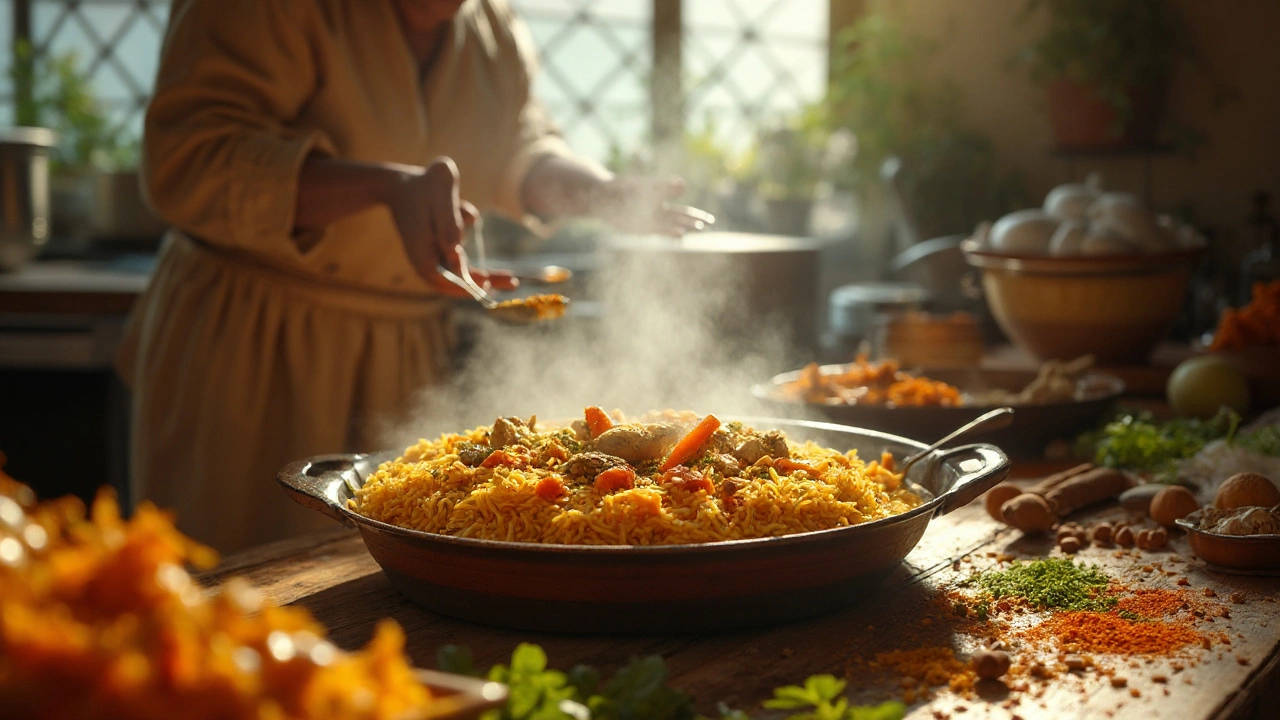Why Is Biryani Difficult to Make? Answers and Easy Fixes
Ever tried cooking biryani and felt like you were juggling a circus? You’re not alone. Most home cooks hit a few roadblocks that make the dish feel impossible. The good news? Those roadblocks are often simple misunderstandings that you can clear up in minutes.
Common Challenges
First off, rice selection matters more than you think. Many people use regular long‑grain rice and end up with mushy or broken grains. Basmati, aged a bit, gives the fluffy, separate kernels that define a good biryani. If the rice is too fresh, it will release extra starch and turn gummy.
Second, the layering trick trips people up. The idea is to alternate rice and meat (or veg) so the flavors meld. But if you press the layers down too hard, steam can’t escape and the rice steams into a paste. Keep the stack loose and trust the heat to do the work.
Third, timing the spice infusion is a hidden culprit. Over‑cooking the whole spices in oil can make them bitter, while under‑cooking leaves the aroma flat. A quick 30‑second temper in hot ghee usually does the job – you’ll hear a faint crackle and see the colors deepen.
Fourth, the dreaded “black things” in biryani – whole cloves, cardamom, peppercorns – can scare newbies. Some think they’re mistakes and toss them out, but they’re actually flavor boosters. The trick is to either remove them before serving or choose smaller amounts so they don’t overwhelm the palate.
Practical Tips to Simplify
Start with a small batch of basmati. Rinse it three times, soak for 20 minutes, then par‑boil for about 5 minutes. It should be just shy of fully cooked – you’ll finish it in the final “dum” step.
Use a heavy‑bottomed pot or a Dutch oven with a tight‑fitting lid. This ensures even heat distribution and traps steam, which is the secret behind that signature fluffy texture.
When you’re ready to layer, sprinkle a pinch of saffron‑infused milk over the top rice layer. It adds color, a subtle aroma, and a visual cue that you’ve nailed the finish.
Don’t forget the ghee splash. A tablespoon of ghee poured over the top before sealing the pot adds shine and a buttery note that ties all the spices together.
Finally, give the biryani a 10‑minute rest after turning off the heat. This “rest period” lets the steam settle, the flavors marry, and the rice finish cooking without burning the bottom.
Remember, biryani isn’t magic; it’s a series of small steps that add up. Swap one habit – like using proper basmati or avoiding a tight press on the layers – and you’ll notice a huge difference. Next time you cook, treat each step like a mini experiment. You’ll soon find the dish moves from “hard” to “just right” and you’ll be the go‑to biryani chef among friends.
Why Is Biryani So Hard to Make? Expert Tips for Mastering Authentic Biryani at Home
Uncover why biryani challenges even experienced cooks, from perfecting rice texture to mastering spice layers. Get real tips and facts for authentic results.
